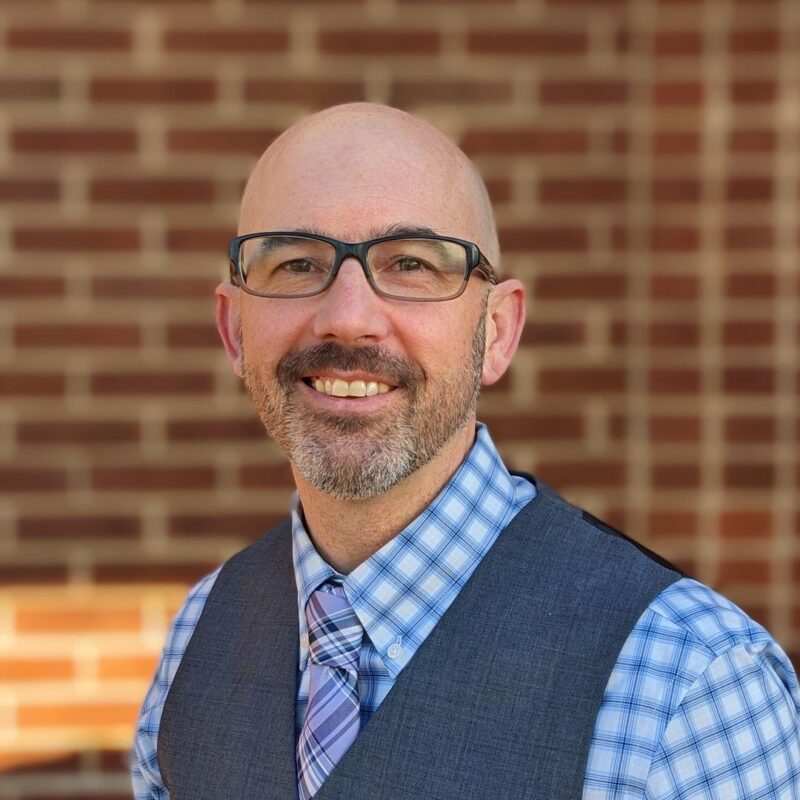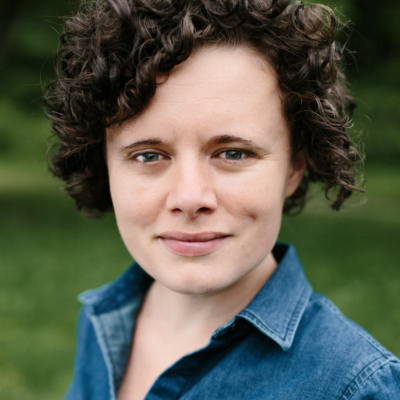_/designing_women.jpg) |
When I picture my mom—an artist of many mediums—in my childhood home, I usually see her in one of two places: sitting on the couch, relaxing after dinner, or at the kitchen table. She often used it as her workspace, and I can see her there now with her glasses pushed down to the tip of her nose as she searched overtop of them for her pliers. She looks happy. But, when I asked her recently about what kind of space she prefers to work in, she recalled a trip she took a few months ago to Malleable Studios, a creative co-op in the National Linen Building at the corner of Market and Meade.
It’s there that metalsmiths Martha Keith and Tavia Brown ply their trade, joined by four other artists who have their workshops in the building. My mom and Martha have been friends for nearly 10 years, since Martha worked with my stepdad, a Harrisonburg-based goldsmith, and they bonded over being creative, appreciating beautiful things, and their mutual passion for jewelry. (Whenever we’re together, they also like to reminisce about the time they spied on me and my high school boyfriend from the second floor of the house as we walked downtown for our first date…but that’s another story for another time.) My mom had just started a new project and stopped in to get some feedback. The response to her work was positive—and overwhelming.
“Being an artist can be very lonely,” she told me. “Of course what you think you’re doing is the best thing you’ve ever done, but to have someone else tell you it’s worth the fuss, that’s very energizing. I left feeling so inspired.”
That supportive spirit is at the heart of this year’s Design Annual. Two groups of women (and, in one case, men) in our area are thriving in alternative work environments. In each, there is no hierarchy—each woman is her own business, but she’s able to create in the same open space as other like-minded people. When she’s stuck, she turns to her neighbor for support or a creative jolt. Without a competitive dynamic, sharing ideas is not only welcome, it’s essential. As clothing designer Kristina Constantine, who is also featured in the following pages, put it, “As a designer, you cannot be in your own vacuum all the time. It needs to be a collaboration, whether it’s your peers or consumers. You always have to have feedback.”
Validation in any form is nice to have—don’t you feel a little boost when someone “Likes” your status on Facebook?—but for a creative person (“With your art, you are revealing a very personal part of yourself,” my mom said), it’s especially important. And given that more than half of creative jobs are filled by women, it’s not surprising that Pinterest—the Web-based bulletin board stealing hours of free time and gaining users faster than Facebook and Twitter—is 83 percent women-utilized. Essentially, the site is the Internet version of exactly what the women at 10 Flavors and Malleable Studios are up to: It’s a space to better understand ourselves, our taste, and each other, but also somewhere to share ideas and inspiration without fear of judgment or failure.
Certainly the ladies featured here are not the only talented designing women in town (not by a long shot, in fact), but they’ve obviously stumbled on a system that works and allows them to prosper. We should all be so lucky.—Caite White
|
From left: Fran Smith, Kristin Adolfson, Laura Roseberry, Mary Murray, Jen Fleisher, Michaux Hood. (Photo by Nick Strocchia)
|
Designing women
It took more than a designer’s eye for a group of young creative professionals to see past the filth at the Downtown space they’d eventually use to house their ideas—it took guts. Long abandoned and taken over by birds roosting amongst a random assortment of ice cream parlor relics, the space, the group decided, had potential. There, under piles of old sundae dishes, was a glass neon sign in a sad state of disrepair. It read, “10 Flavors.” A creative co-op was born.
Says a recent study from global consultancy firm Hay Group, women in particular are well-suited to collaborative work environments, so it’s not surprising that two in our area are thriving.
“High levels of emotional intelligence are critical in matrix work environments, where individuals are required to lead by influence, rather than lead through direct authority,” said Hay Group director Ruth Malloy. “Matrix work environments,” as Malloy referred to them, loosely translates to the idea of pooling like-minded individuals into one environment. In essence, exactly what 10 Flavors, now in its third iteration on the top floor of 108 Second St. SW, is all about.
The office—itself a testament to good design, with its huge arched windows overlooking the Mall—is populated with work areas for 10 creative businesses, seven members of which are female-run. The same glass sign (which, now that it’s been cleaned up, actually reads “14 Flavors”) hangs on the wall.
Laura Roseberry is one of six female graphic designers in the co-op and the sole female founding Flavor in the mix. The mission for the group, as she sees it, is to be “a place for small business to be able to have the benefits of a larger business, but retain its small structure.” Sharing the space (and the rent) enables each designer to use the large open room as her own, as needed. A 10′ conference table anchoring the light-filled space has seen innumerable client meetings and presentations, but also many a dinner party and happy hour. It serves as the nucleus of the office, and when there is work to be done to maintain the right balance among its members, those issues are literally brought to the table.
“All the members are part of the whole, and get it, and want to be part of this family,” said Mary Michaela Murray, one of the co-op’s other graphic designers. “It works because we understand what it’s about.”
Murray once worked in the space as an employee of another designer, but after leaving to start her own business downstairs in the same building, she found herself feeling the pull of her friends upstairs nearly daily. She would often join them at the big table for lunch or wander upstairs to see what they were up to. Soon, she returned to the top floor and brought graphic designer Fran Smith with her.
Designer Michaux Hood has a similar story. She worked solo at home after leaving a job with a local design firm to start her own company. But that quickly lost its appeal and, a year later, she moved out of her home office and into 10 Flavors. A year after that, her best friend and now business partner, Jen Fleisher, joined her.
“Here, it truly benefits you to support the people all around you in all scopes; support their business, support their success and support their home life,” Fleisher said. “We really do branch out beyond coexistence, success, and our financial survival. That’s how this whole space works.”
Everyone at 10 Flavors is regularly on a deadline and, as a result, the space maintains a pace and rhythm much like that of a busy household. Wives and mothers, each of the 10 Flavors is also involved in numerous creative pursuits: music, theater, and fine arts, to name a few. Fleisher in particular is one of Charlottesville’s most respected yoga instructors. Each one’s ability to thrive is a testament to their collaborative community.
Said Kim Smith, an associate principal at VMDO Architects, “Women’s natural tendencies to collaborate, to nurture, and contribute to the group project is an asset. In the past, design leaders were expected to behave like Don Draper—a charismatic leader who comes in and wows everyone with the finished product. Now every team member shares in the creation.”
In 2009, Smith started Women in Design, a monthly meeting for female architects, landscape architects, planners, interior designers, contractors, engineers and graphic artists to gather, network, share, celebrate accomplishments, and learn from each other. And while, at VMDO, the team members are often working on the same project, the benefits of a collaborative environment ring true.
“I don’t know what I would do without 10 Flavors,” said graphic artist Kristin Adolfson. “It’s not just my office space. Knowing that there are people here to help you if you need it and would be more than happy to do anything to help you get through that time when you are a business owner and you are trying to juggle a million things, is kind of amazing.”
Given that all but one of the ladies at 10 Flavors work in the web/graphic design discipline and have similar skill sets, they all agree there’s no competition. If anything, the consensus is just the opposite. They would never seek out another member’s client for work, but if they are approached, they go directly to the other designer to work it out first.
“We are not in competition with each other, we are not a company,” Murray said. “We are individuals sharing a space and it gives us the freedom to share our lives in a way that perhaps people in a hierarchy are not able to do.”
|
Martha Keith (Photo by Nick Strocchia) |
Channeling mediums
Less than a mile from 10 Flavors, another collaborative workshop is getting ready for an expansion. The group has outgrown its current location at the National Linen Building, and its larger 1,000-square-foot space will house Tavia Brown, Martha Keith, Kim Boggs, Rebecca Phalen, Nancy Hopkins, Lindsay Guynn, and Mia van Beek, who will move her studio out of her home to join them.
Brown began Malleable Studios (an unofficial name) in 2001, when she set up a workbench in her husband’s Linen Building sign shop. Two years later, she asked Keith, a friend and fellow metalsmith, to join her. The two of them worked out of a loft until 2007, when they took over their current space and brought in a third artist.
Currently, there are five metalsmiths (Brown, Keith, Phalen, Hopkins, Guynn) and Boggs, a mixed media artist, in the building. Boggs met Brown and Keith in 2008 at a craft show and has since incorporated many disciplines into her work after learning from fellow artists in and outside of their co-op at the complex. Woodworking, blacksmithing, and silversmithing all make their way into her found object assemblages.
“Not only has this studio itself been a wonderful opportunity,” Boggs said, “but the whole building is full of really generous people.”
|
Tavia Brown (Photo by Nick Strocchia) |
Stop, drop, and “Go!”
Beyond the creative collaboration, one thing both of these workshops have in common is support, both creatively and personally.
The members of 10 Flavors attribute part of their co-op’s success to being very gracious and generous with their time, making space for each other, and sharing knowledge and information. The same goes for the ladies at Malleable Studios.
The “five-minute piece,” for instance, is an exercise Brown and Keith invented years ago as a way to combat the creative rut that inevitably crops up, and one that has since been adopted by all members of the group. When one of them seeks inspiration, they all grab a piece of wax from their workbench, start the timer, and go at it. No preconceived direction is allowed. Just raw, immediate sculpting. And while they admit the five minutes often turns into 25 as they shape their way out of the rut, Keith said, “It’s something that would be impossible for me to initiate on my own.” Meant as a fun, creative nudge, entire collections have sprung forth from these exercises for two of the designers.
It’s this sort of “one for all and all for one” attitude that propels the success of these groups. When one member is creatively challenged, they all stop to combat the problem. When one needs childcare, they all pitch in.
“Many women are by nature team-oriented,” Smith said. “They seek to build consensus, bring the group along, rather than dominate with authority.”—Sarah Owen and Caite White
|
Clothing designer Kristina Constantine (right) insists that, because she does not actually make them, they are not her bags. Nevertheless, she’ll be there when the pieces are displayed at the International Rescue Committee’s upcoming benefit in May. (Photo by John Robinson) |
It’s in the bag
Kristina Constantine collaborates with Nepali refugees
I knew that I wanted to do creative work and I knew that I was in a place where bureaucracy was not going to stand in my way,” said clothing designer Kristina Constantine, describing how she felt when she first came to Charlottesville.
She passionately devotes her creativity to helping the International Rescue Committee’s clients thrive in their new home. She proclaims, “I know that they are going to do well, it’s just a matter of time and it’s exciting for me to be part of that process.”
She understands the process all too well, knowing just what it’s like to start over with nothing. The IRC relocated her own family to Charlottesville in 2004, after ethnic conflicts between Armenia and Azerbaijan forced them to flee their native country.
One Sunday afternoon, a couple of years after arriving in the states, a good friend took Constantine on a surprise road trip. She knew nothing of where they were headed, except that she needed to bring along her fashion design portfolio. Turns out, they were going to a national portfolio review in Baltimore. She presented her work to several schools that day and soon she was packing for New York City to attend Parsons The New School for Design.
She graduated in three years with a degree in menswear, which culminated in a thesis project inspired by her heroes at the IRC.
“I made a collection around the rugged, masculine look of the field workers who go to the most God-forgotten areas of the world to rescue people,” Constantine said.
She felt such a strong connection to the nonprofit that she decided to donate the collection to the IRC’s 2009 benefit auction, and she swells with pride over the significant funds raised that night by her hard work on that project.
Work hard, play hard
Since returning to Charlottesville, Constantine has worked tirelessly with a sustainable design cooperative of artisan refugees. The current participants, more than 20 women from Nepal who range in age from their early 20s to late 70s, have been in the United States for less than a year. The goal of this particular project, aided by a grant from Women United in Philanthropy, is for the refugee women to learn how to market their wares in order to bring much needed income to their families. They are also learning basic business practices. Constantine volunteers her free time to teach, consult and facilitate the co-op. It goes beyond dedication, she said. “I think that I get more out of it than they do. I feel like it really enriches my life significantly.”
Every weekend, Constantine gets together with her female collaborators for two-plus-hour workshops to create a line of handbags. Occasionally they gather at the IRC with translators, but usually their creative environment is the refugees’ homes. Children, mothers, and grandmothers gather around the table to create, much like they would in their traditional communities. As traditional Nepali music plays in the background, Constantine instructs the women on everything from sewing techniques to the ways of their new society to the English language.
“It’s a very unusual work environment compared to what I’m used to,” she said. “For me, when you work, you work. But I’ve realized that you can have a party while you are working. …They are not always able to communicate exactly what they want to say, but it’s always perfectly clear somehow.”
Her students are also influencing Constantine’s process and teaching her how to be a better designer. Once, when she tried to explain the value of making small test swatches for patterns, the women looked at her bewildered. They wondered, why not make a sample in the dimensions of the finished product? Their sense of preserving materials and reducing waste is very strong, so they agreed—no swatches in favor of practicality. They also have no use for pretension. If something is not working, they instantly address it. “As a designer, you cannot be in your own vacuum all the time. It needs to be a collaboration, whether it’s your peers or consumers,” Constantine said. “You always have to have feedback.”
Going to market
Juggling a family and a career leaves many working mothers overwhelmed. The Nepali women in Constantine’s group also have language classes, medical appointments, green card applications and job searches to manage, initially without personal transportation. The IRC facilitates local volunteers to assist with these challenges. For these women, Constantine said, it is not only essential to make money starting over in this society, “It is also empowering to have your own income and re-establish yourself as a woman in a family.”
Constantine’s background as both a modern designer and a former IRC client makes her a valuable mentor. After getting home from her full-time job, her weeknights are often spent researching the most cost effective ways to develop traditional crafts into competitive marketable products. She applies her technical and aesthetic expertise to each piece, whether selecting materials, defining proportion, or choosing a color palette. She is currently teaching the Nepali women how to sew linings into their skillfully crocheted bags. But her influence and insight goes far beyond what she learned in school. It’s important to Constantine to help these women make something by hand that is not just an art object, but also a useful accessory.
“I hope that I can take their traditional crafts, which are so beautiful, and give them a little bit of a modern appeal,” she said. “I want them to be competitive.”
She knows that the community of Charlottesville is the ideal place for this challenge. If she had to do this research in a highly competitive New York trade show context, it would be very different. “But here, it’s all directly to the consumers, to the people who you might actually see carrying a bag at the market. In that respect, our town is like a creative laboratory for projects like this.”
The pieces will be displayed at the IRC’s upcoming benefit in May and Constantine hopes people use the event as a way to respond and learn what the co-op can do differently. It will also be a great opportunity to show the IRC’s supporters what their efforts can ultimately result in. “When [the refugee women] have a chance, through their creative process, to meet people who are excited about them being here and excited about what they have to offer, everybody can learn a great deal and help each other in many ways,” she said. “This group of women is totally inspiring.”—Sarah Owen
/2415_Feature.jpg)
_/C'Ville-Martha-Keith-005.jpg)
_/C'Ville-Metal-Gals-2-017.jpg)
_/RI_-IMG_9830.jpg)





